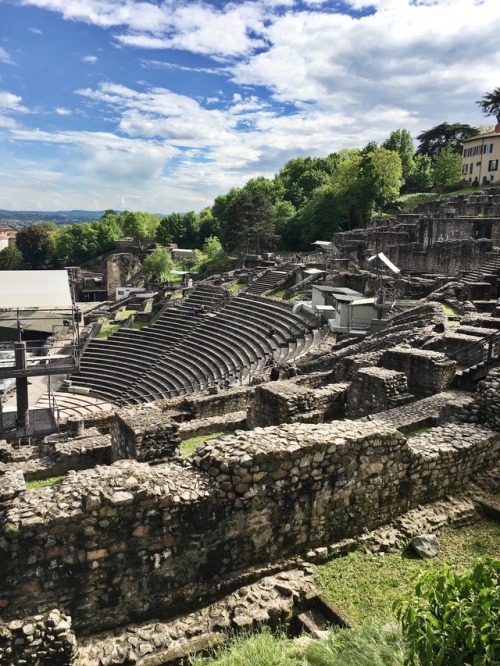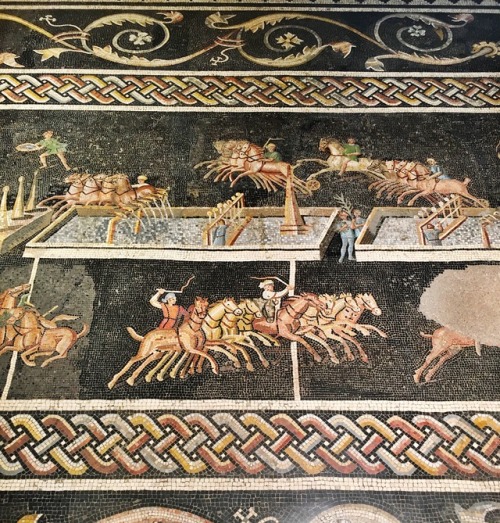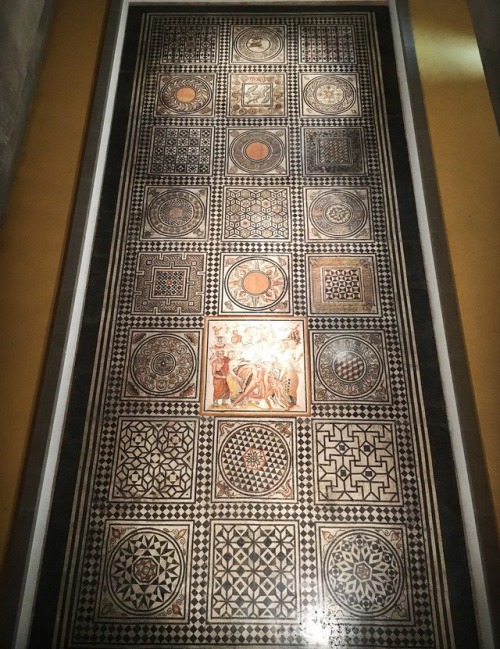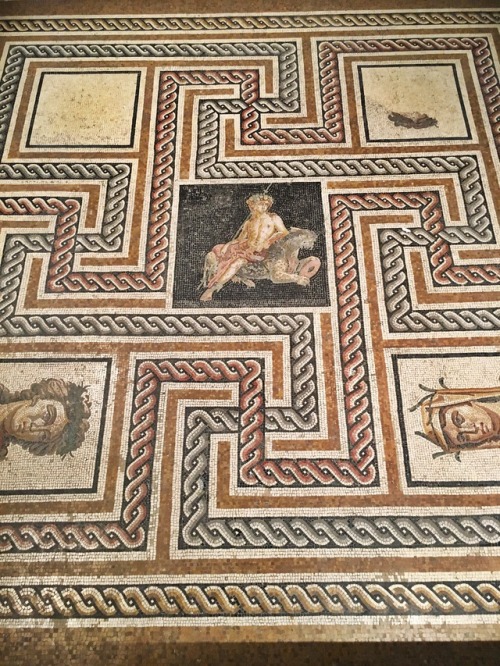Lyon, FranceAlthough renown for its prestigious culinary heritage, Lyon is also well known in the fi
Lyon, FranceAlthough renown for its prestigious culinary heritage, Lyon is also well known in the field of Roman art and archaeology because of its history as Lugdunum, the former capital of the Gallic Roman province, Gallia Lugenensis. Due to its ideal location at the centre of several road networks that spanned throughout Gaul, it was one of the most important cities in the Roman Empire, and the fact that two Roman emperors, Claudius (10 BC-54 AD) and Caracalla (188-217 AD), were born there is no coincidence. Fourvière hill, the current location of the Gallo-Roman Museum and amphitheater ruins, which we visited, was once the heart of the ancient capital. The Brooklyn Museum’s two mosaics of lions are particularly apt examples of the art found in ancient Lugdunum. Not only is the image of a lion found throughout Lyon as the city’s symbol, but its mosaic format also recalls the many expansive mosaics that are highlighted throughout the Gallo-Roman museum. The process of making a deluxe mosaic, as explained by the Roman architectVitruvius (c.85-16 BC), involved doing almost all of the work offsite in a studio. Each of the stone pieces were cut into cubes and laid into an outlined design, either on a piece of fabric on which the design had been drawn in the reverse image, or in a tray of sand, after which the fabric was glued onto the pieces to lift them out. The prepared motif was then packed with mortar, turned over, and placed into position on a leveled floor. Finally, the fabric was removed, and the cubes were polished and grouted. Other noteworthy Roman objects that were excavated from Lyon included sculptures and ceramics, but we’ll be delving more into those type of objects in our next posts on Rome and Pompeii!Posted by Amanda Imai -- source link
#bkmtravels#brooklyn museum#lyon#france#lugdunum#gallic#roman#gallia lugenensis#gaul#emperor#claudius#caracalla#amphitheater#ruins#ancient#mosaic#lions#gallo-roman#museum#vitruvius#architect#cubes#highlight



